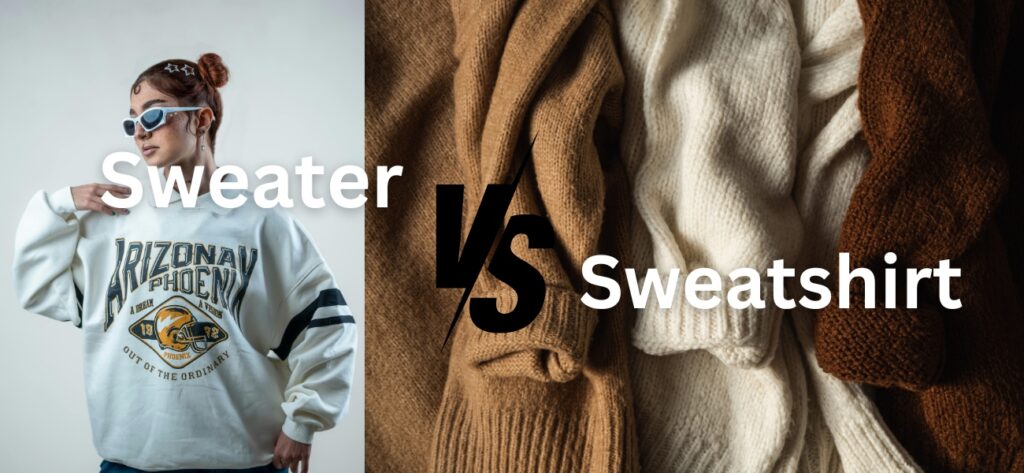The fashion industry has seen sweaters and sweatshirts dominate wardrobes for decades. While both garments are staples, their purposes, designs, and markets differ significantly. For aspiring fashion brands or existing ones looking to diversify, understanding these differences is essential. This comprehensive guide dives deep into the contrasts between sweaters and sweatshirts, covering materials, designs, comfort, market trends, and branding strategies to help you make informed decisions for your clothing line.
What is a Sweater?
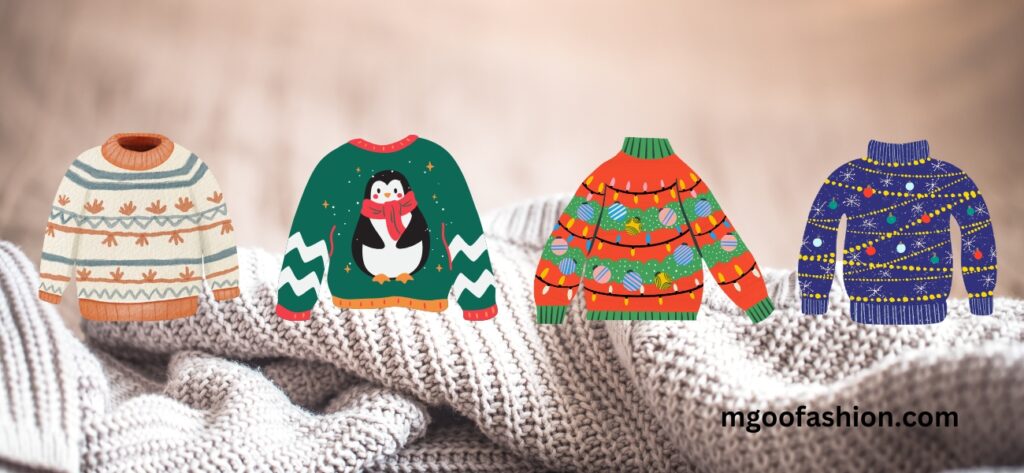
A sweater is a knitted garment designed to provide warmth. Traditionally made from wool, sweaters have evolved to include a variety of materials like cashmere, cotton, and synthetic blends. They come in various styles such as pullovers, cardigans, turtlenecks, and more. Sweaters are highly versatile, transitioning seamlessly from casual to formal settings. Their ability to maintain a polished appearance while keeping the wearer warm makes them an essential item in any wardrobe.
What is a Sweatshirt?
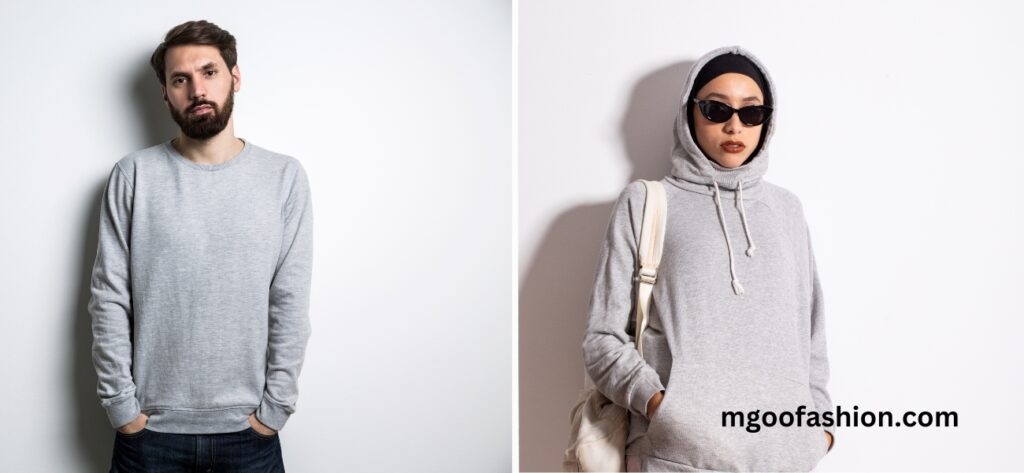
A sweatshirt, on the other hand, is a soft, casual piece of clothing typically made from cotton or fleece materials. Originally designed for athletes, it has become a mainstay in athleisure and streetwear. Sweatshirts are known for their relaxed fit and comfort, often featuring crewnecks, hoodies, or zip-up designs. With their roots in sportswear, sweatshirts have evolved to include high-fashion collaborations and creative designs, making them a go-to for modern, casual fashion enthusiasts.
2. Key Differences Between Sweaters and Sweatshirts
When creating or expanding a clothing line, knowing the key distinctions between sweaters and sweatshirts can guide your designs, marketing strategies, and production choices. Below are the primary differences:
1. Material
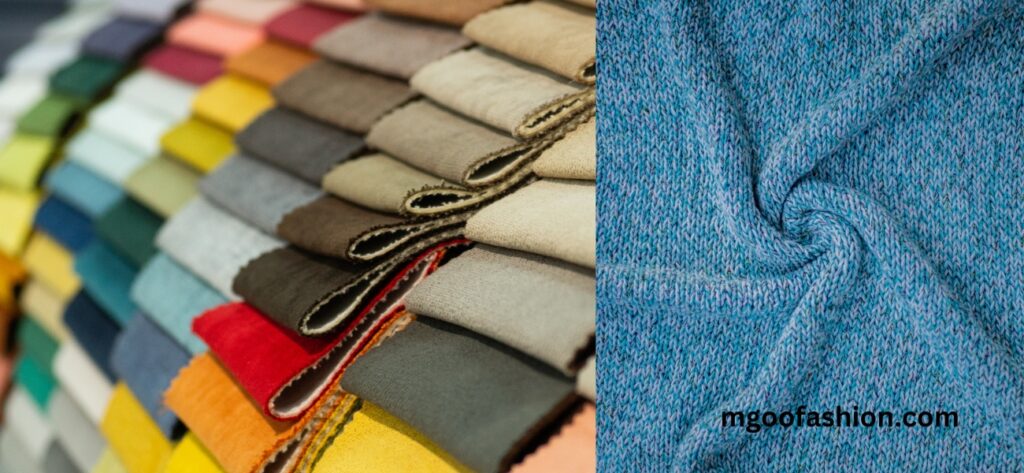
Sweater:
Made from knitted materials like wool, cashmere, or cotton.
Premium options include alpaca wool, mohair, or sustainable fibers like organic cotton and recycled yarns.
Provides texture and breathability.
Often incorporates natural fibers for a luxurious feel and durability.
Sweatshirt:
Constructed from non-knit fabrics such as cotton fleece, jersey, or polyester blends.
Focuses on smooth interiors for warmth and comfort.
Incorporates performance fabrics in modern designs for activewear.
Designed to endure frequent washing and everyday use without losing softness.
2. Fit and Design
Sweater:
Tailored designs with a formal or semi-formal appeal.
Styles include V-necks, crewnecks, turtlenecks, oversized fits, or cropped cuts.
Often features intricate patterns, ribbed cuffs, and hems.
Allows for creative embellishments like cable knits, color blocking, or embroidery.
Sweatshirt:
Relaxed, casual fit designed for everyday wear.
Styles include hooded sweatshirts (hoodies), zip-ups, oversized options, and classic crewnecks.
Emphasizes minimalistic or bold graphic designs, including logos or prints.
Frequently incorporates streetwear elements, such as graffiti art or pop culture references.
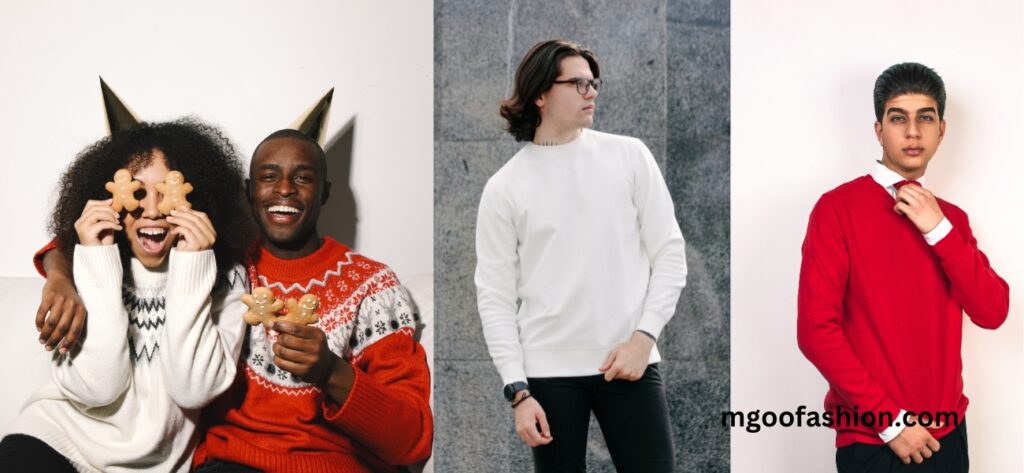
3. Warmth
Sweater:
Naturally insulating due to knit materials and thicker yarns.
Wool and cashmere sweaters excel in colder climates.
Breathable, making them suitable for layering.
Suitable for both indoor and outdoor wear in colder months.
Sweatshirt:
Provides warmth through fleece or brushed interiors.
Less breathable, ideal for moderate cold weather or casual lounging.
Frequently used as a mid-layer in streetwear and athleisure outfits.
4. Comfort
Sweater:
Offers luxurious comfort when made from high-quality materials like cashmere or merino wool.
Can feel snug or restrictive, depending on the fit and neckline.
Lightweight knits can provide comfort for transitional weather.
Sweatshirt:
Prioritizes softness and stretch for maximum comfort.
Lightweight, versatile, and great for lounging or outdoor activities.
Designed to accommodate a wide range of body types and movements.
5. Versatility for Occasions
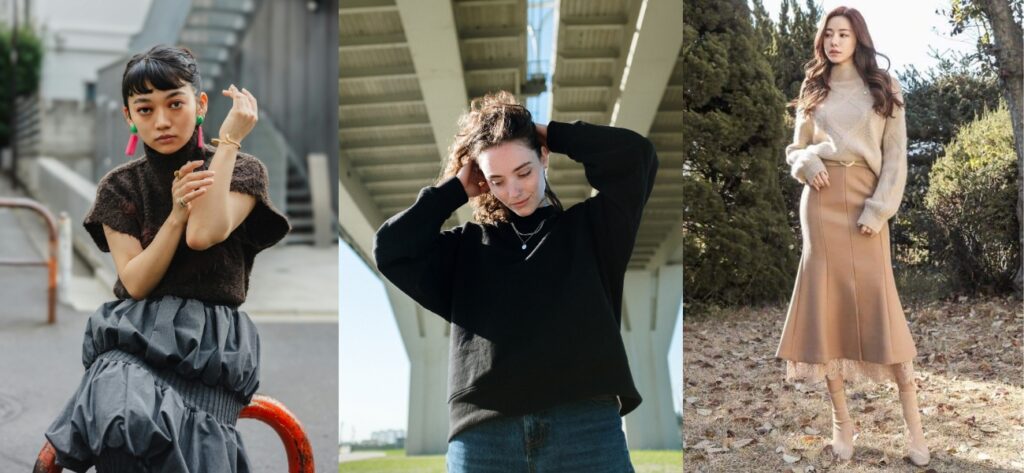
Sweater:
Suitable for formal or semi-formal events.
Pairs well with collared shirts, trousers, or skirts.
Perfect for offices, dinners, or seasonal festivities.
Can transition from daytime to evening wear with ease.
Sweatshirt:
Best suited for casual, sporty, or streetwear styles.
Commonly paired with jeans, joggers, or sneakers.
Dominates the athleisure and loungewear markets.
Ideal for outdoor activities or casual outings.
6. Durability
Sweater:
Requires careful maintenance, such as hand washing or dry cleaning.
Long-lasting with proper care but prone to pilling or shrinking.
High-quality sweaters retain their shape and texture over years of use.
Sweatshirt:
Easy to care for, typically machine washable.
Durable for everyday use but may lose shape or develop fading over time.
Designed for high-frequency use, making it an economical option for consumers.
7. Customization Potential
Sweater:
Customization is intricate and costly, involving patterns, textures, or embroidery.
Best suited for luxury or high-end collections.
Allows for subtle branding that aligns with premium aesthetics.
Sweatshirt:
Easier and more cost-effective to customize with logos, prints, or bold designs.
Ideal for streetwear brands or promotional campaigns.
Popular for collaborations with artists or influencers to create limited-edition styles.
8. Price Point
Sweater:
Typically higher-priced due to premium materials and craftsmanship.
Appeals to mid-range and luxury markets.
Represents an investment piece for consumers seeking quality and style.
Sweatshirt:
Generally more affordable to produce and sell.
Accessible for mass-market consumers, especially in athleisure.
High turnover potential due to trend-driven designs.
3. Market Trends for 2025
In 2025, sweaters and sweatshirts continue to hold strong positions in the fashion market, with distinct trends shaping their demand:
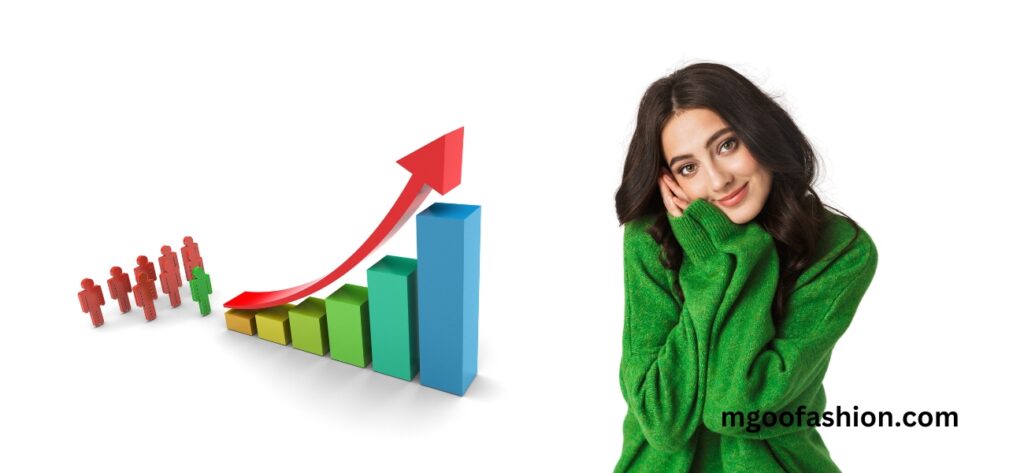
Sweaters:
The resurgence of premium knitwear, driven by sustainability and eco-conscious consumers.
Increased demand for timeless, high-quality pieces suitable for workwear and formal occasions.
Innovations in lightweight knits, making them wearable year-round.
Growth in demand for gender-neutral knitwear styles.
Sweatshirts:
Dominating the streetwear and athleisure markets, reflecting the casualization of fashion.
Bold graphic designs and collaborations with artists or influencers driving popularity.
Growing demand for performance fabrics and functional features like moisture-wicking and UV protection.
Introduction of smart textiles for tech-enhanced wearability.
4. Manufacturing Considerations for Fashion Brands
Understanding the manufacturing process can help brands choose the right garment to produce:
Cost Comparison:
Sweaters: Higher production costs due to knitting techniques, premium materials, and labor-intensive processes.
Sweatshirts: Lower production costs with simpler sewing and material sourcing.
Sustainability:
Sweaters: Focus on natural fibers like organic wool or recycled cotton for an eco-friendly appeal.
Sweatshirts: Growing interest in recycled polyester blends and biodegradable fleece.
Scalability:
Sweaters: Longer production timelines due to knitting requirements.
Sweatshirts: Faster production cycles, making them more scalable for mass markets.
5. Branding and Positioning Strategies
Crafting a distinct brand identity for sweaters and sweatshirts involves aligning your designs and marketing with consumer expectations:
Sweaters
Position as timeless, premium, and cozy.
Ideal for luxury brands or collections targeting professionals and fashion-forward consumers.
Focus on storytelling around craftsmanship, materials, and sustainability.
Sweatshirts
Position as trendy, casual, and versatile.
Perfect for streetwear, youth culture, and athleisure brands.
Emphasize bold graphics, collaborations, and accessibility.
6. Retail and E-Commerce Opportunities
Seasonal Sales Patterns
Sweaters: High demand during colder months and festive seasons.
Sweatshirts: Year-round appeal with spikes in fall and winter.
E-Commerce Tips
Optimize product listings with clear keywords (e.g., “sustainable wool sweater,” “graphic hoodie sweatshirt”).
Highlight materials, fits, and styling tips to educate customers.
7. Conclusion
Sweaters and sweatshirts are both valuable investments for any fashion brand, offering unique benefits and market potential. Sweaters cater to a premium, formal audience, while sweatshirts dominate casual, athleisure markets. By understanding their differences and aligning them with your brand’s identity, you can create products that resonate with your target customers.
With the rise of sustainability and innovative designs, both garments have opportunities for growth in 2025. Whether you’re starting a new fashion line or diversifying your existing collection, strategic decisions based on these insights can help you succeed in a competitive industry.
If you have any questions about starting or developing your own fashion brand, feel free to reach out to MGOO,A Clothing Manufacturer with more than 15 years of experience.. As experts in clothing production, we’re here to help you bring your vision to life—from concept to final product. Let us guide you through the process of creating high-quality garments that stand out in today’s market.

